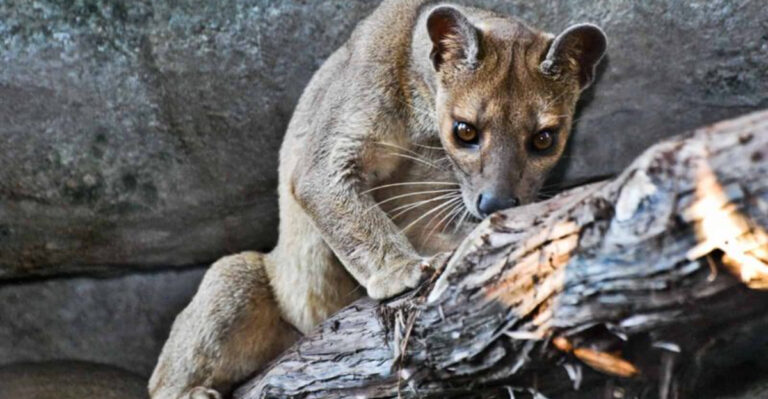How To Identify And Attract A Rufous Hummingbird

Have you ever spotted a tiny copper-colored blur zooming through your garden? That might be a Rufous hummingbird, one of North America’s most feisty and far-traveling tiny birds.
These pocket-sized powerhouses migrate over 3,000 miles each year, from Mexico to Alaska. Learning to spot and attract these remarkable creatures can transform your backyard into a hummingbird haven and provide hours of natural entertainment.
1. Look For The Rusty-Orange Plumage
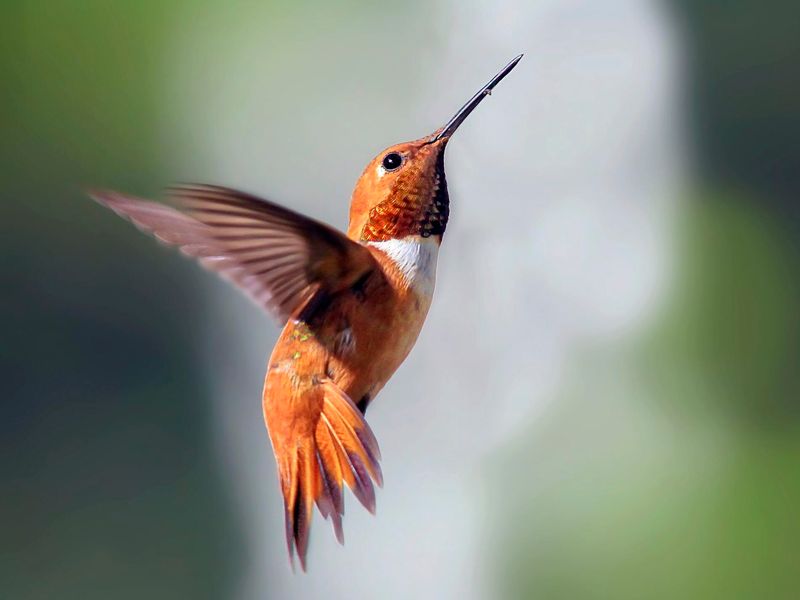
Males flash a brilliant cinnamon-orange coat that catches sunlight like burnished copper. This distinctive coloring sets them apart from other hummingbird species you might encounter.
Females and juveniles sport green backs with rusty flanks and patches of orange on their throats. When observing, pay special attention to the tail – even in flight, you can spot the characteristic rufous coloring.
2. Listen For Their Unique Buzzing Sound
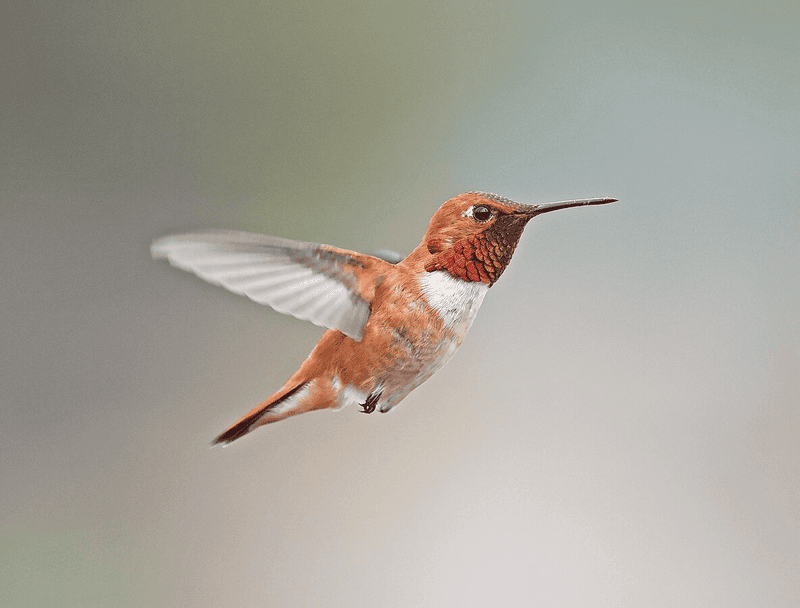
Your ears might catch them before your eyes do! Rufous hummingbirds create a distinctive buzzing sound when flying, slightly lower-pitched than other hummingbird species.
Males perform spectacular diving displays during courtship, producing a high-pitched trilling whistle with their tail feathers. Early mornings and evenings are prime times to hear these acoustic signatures around flowering plants.
3. Plant Native Red Tubular Flowers
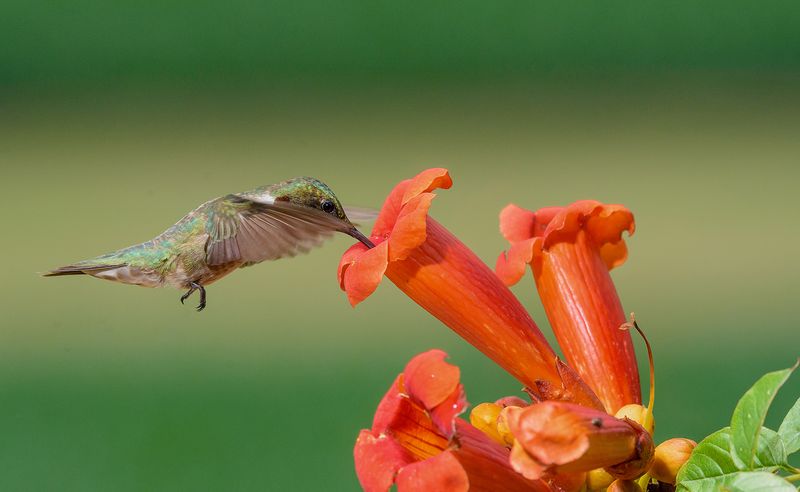
Red tubular blooms act like magnetic beacons for these tiny travelers. Native plants like red columbine, bee balm, salvia, and trumpet honeysuckle rank high on their preferred menu.
Arrange flowers at varying heights throughout your garden to create multiple feeding zones. These hummers evolved alongside these native plants, which perfectly accommodate their specialized long bills and high-energy needs.
4. Hang Special Feeders With Red Accents

Forget fancy feeders – simple saucer-style models with red parts minimize dripping and attract Rufous hummingbirds effectively. Position several feeders spaced throughout your yard, as these territorial birds often chase others away.
Fill with homemade nectar using four parts water to one part white sugar. Skip the red dye – it’s unnecessary and potentially harmful to these delicate birds.
5. Watch For Territorial Behavior

Feisty doesn’t begin to describe these tiny fighters! Rufous hummingbirds are famously aggressive, often chasing away birds twice their size from feeding areas they’ve claimed.
Males perform elaborate aerial displays, flying in wide U-shaped patterns to defend territory. Spotting this territorial behavior is a telltale sign you’ve got a Rufous visitor, not one of their more peaceful hummingbird cousins.
6. Create Moving Water Features
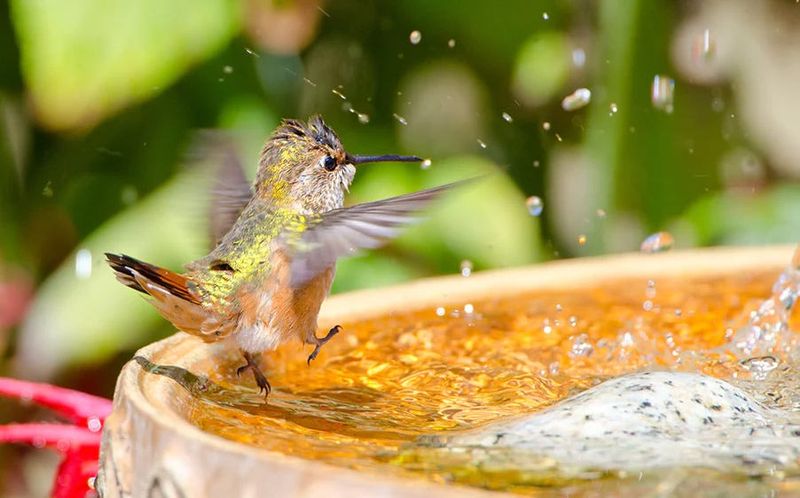
Sparkling, moving water catches their eye like nothing else! A small bubbling fountain or mister provides both drinking and bathing opportunities these travelers crave after long flights.
Position water features near flowering plants for a complete hummingbird rest stop. Rufous hummingbirds particularly enjoy flying through gentle spray from misters on hot days, using the droplets to bathe mid-air.
7. Notice Their Migration Timing

Mark your calendars for these punctual travelers! Rufous hummingbirds appear in southern states as early as February, reaching the Pacific Northwest by April, and Alaska by May.
Their southward journey begins in July, with most birds passing through by September. This clockwork migration schedule differs from resident hummingbird species, making timing a key identification clue in many regions.
8. Provide Perching Spots Nearby
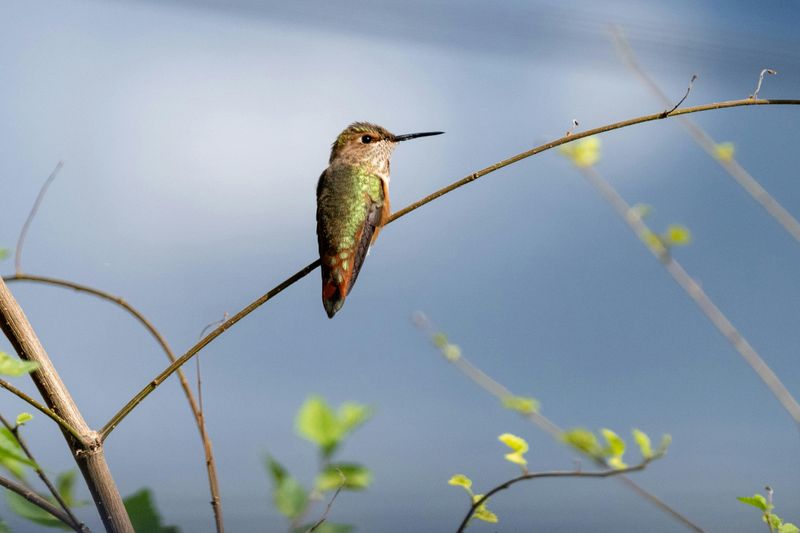
Small bare branches near feeding areas offer perfect resting spots for these energetic birds. Despite their famous flying abilities, Rufous hummingbirds spend 80% of their time perched, conserving precious energy.
Position slender branches near flowers or feeders, and you’ll increase your chances of extended observation. Males often select prominent perches with good visibility to monitor their territory and spot potential mates.
9. Observe Their Hovering Style

Few birds match their aerial precision! Rufous hummingbirds hover with their tails slightly fanned and body positioned more horizontally than other hummingbird species.
Their wings beat 70 times per second, creating their characteristic blur. When feeding, notice how they often maintain a slight backward tilt, distinguishing them from the more vertical posture of similar species like Allen’s hummingbirds.
10. Maintain A Pesticide-Free Garden
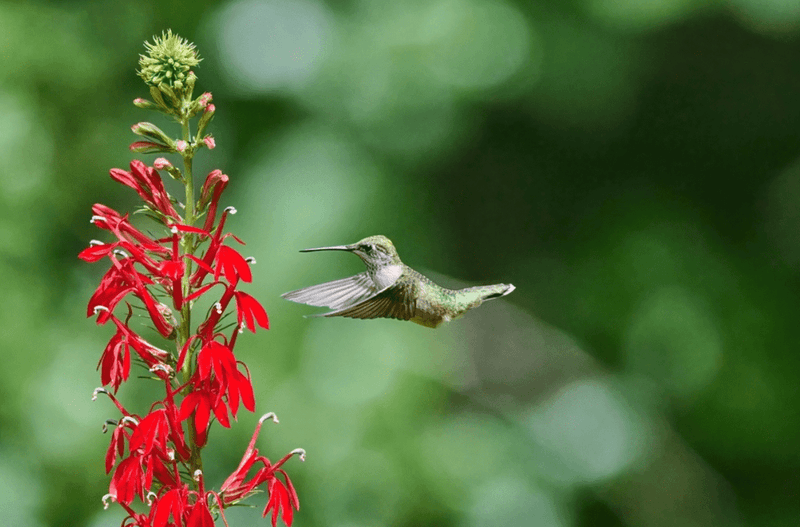
Chemical-free gardening isn’t just eco-friendly – it’s essential for attracting these discerning diners! Rufous hummingbirds consume numerous small insects along with nectar, providing crucial protein for their diet.
Native plants naturally attract these insects without chemical help. Spider webs provide nesting material for these resourceful birds, who collect the silk to bind their tiny nests together and anchor them to branches.




